On Observing Time
Over the past few years I have spent increasingly more time out in the San Gabriel Mountains. This range borders the Los Angeles basin, with the California State Route 2 highway cutting up from Echo Park and slicing the Angeles National Forest out to the Mojave. It’s a bizarre environment, where shaded fern groves hide behind the bend and chaparral yuccas bloom alongside coulter pines, all while the basin cooks below as it sprawls towards the Pacific.
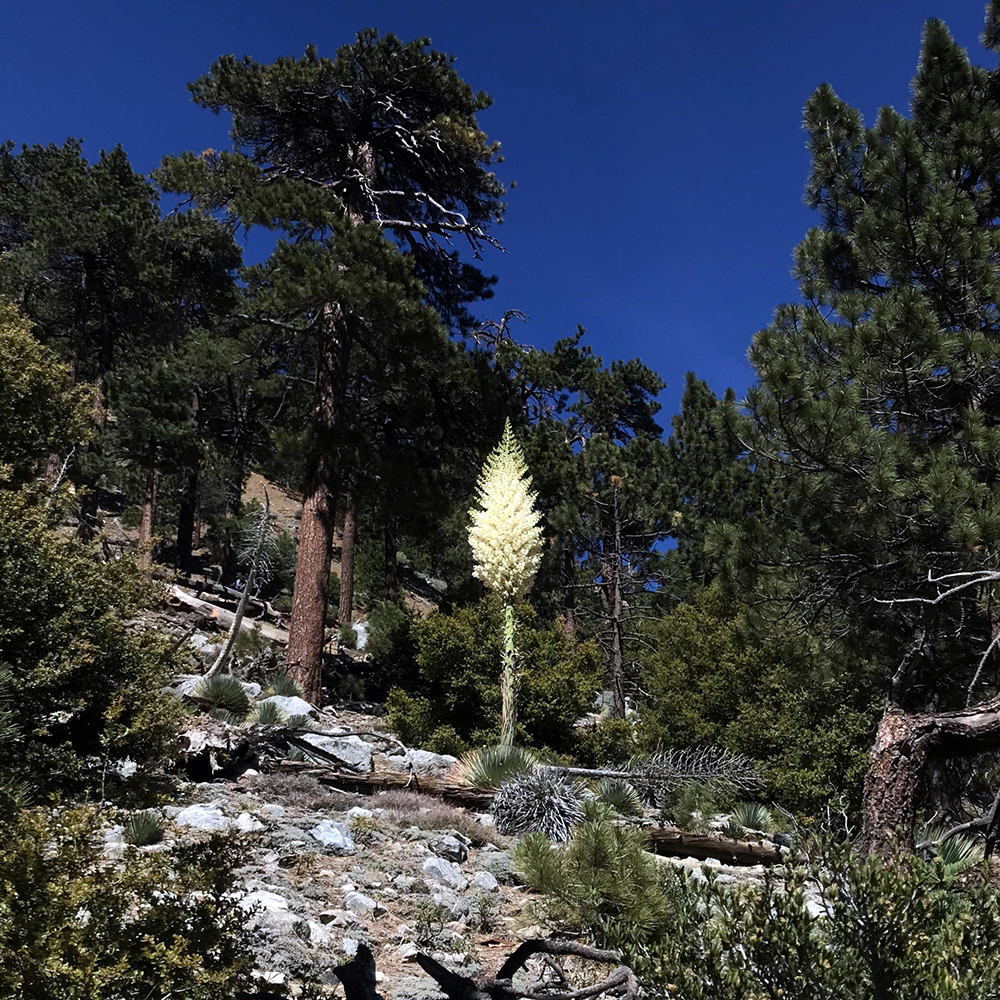
One of the more prominent peaks on the western end of the San Gabriel range is Mount Wilson. This mountaintop is home to a dense collection of various antennae, servicing public, private, and military interests (almost every Los Angeles-based television station broadcasts from here). Alongside and predating this radio garden sits George Ellery Hale’s Mount Wilson Observatory. A place of exceptional astronomical significance, the observatory’s grounds are home to two particular telescopes—60-inches and 100-inches each—both of which were the world’s largest at one point in time. Edwin Hubble used the 100-inch Hooker telescope throughout the 1920s to discover that the universe does extend beyond the Milky Way galaxy, and later, to find that the universe itself is forever expanding.
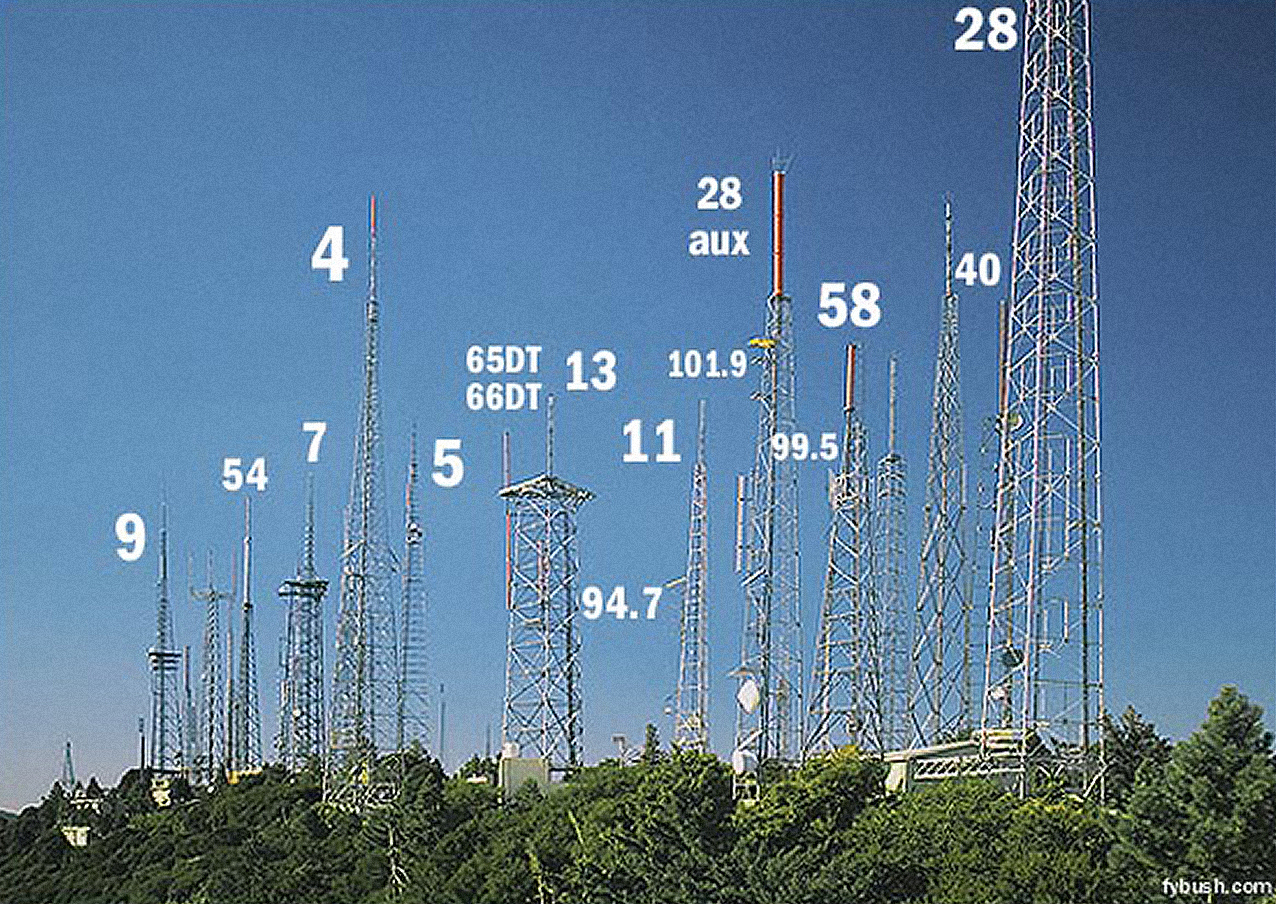
My interest in what goes on at Mount Wilson developed when I learned that the UCLA Department of Physics and Astronomy operates a camera mounted on top of the 150-foot solar tower at the mountain’s summit (there are a handful of solar towers up there, as Hale initially constructed the observatory for the purpose of researching the sun). The output of this mounted Olympus SP-350 camera, known as the Towercam, is publicly accessible through a website on Mount Wilson’s web portal. These days, the camera is usually pointed east towards the greater San Gabriels. Waterman, Twin Peaks, and Baden-Powell are some of the mountains sitting in the background of the camera’s view, while the 100-inch telescope dome sits squarely in the foreground.
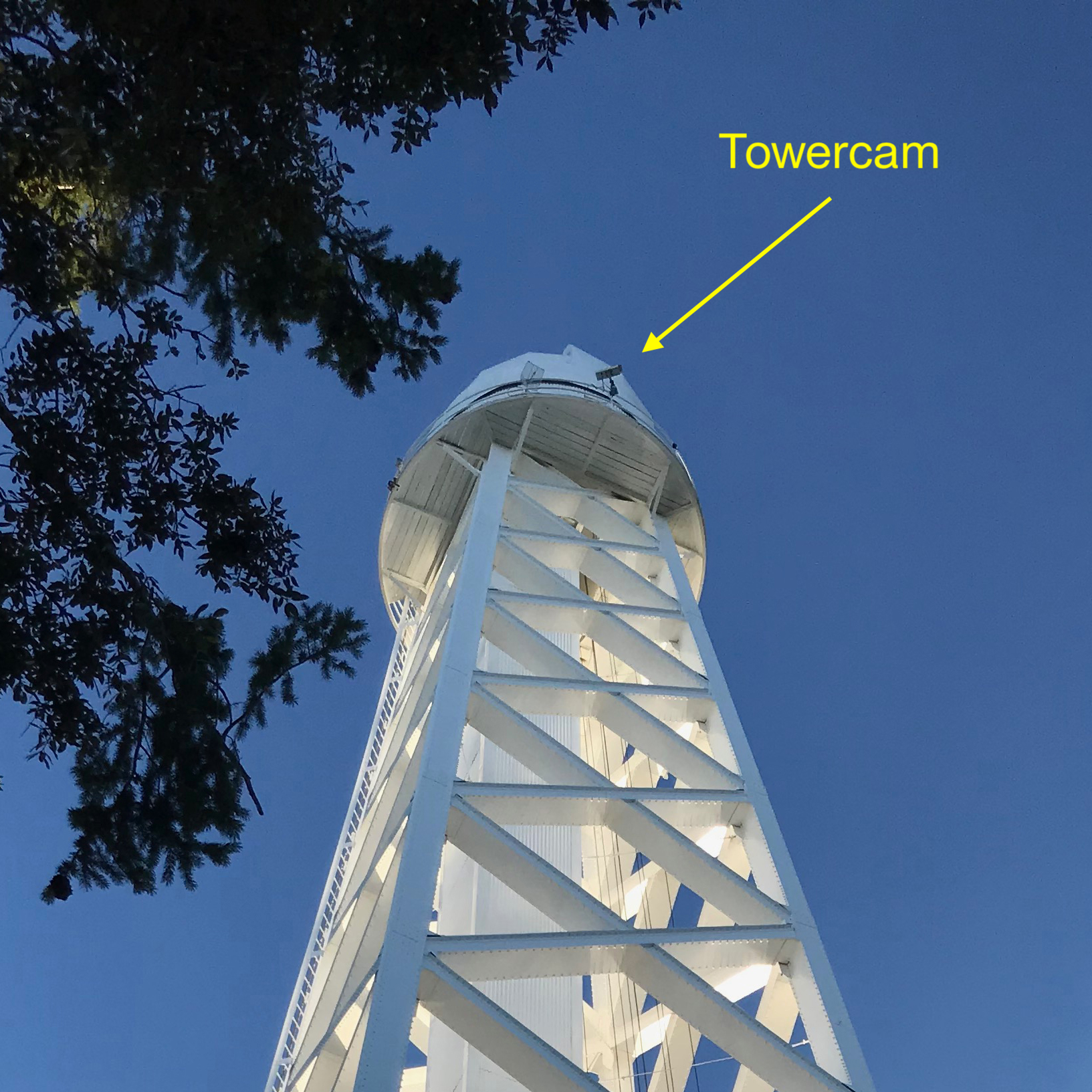

The still image broadcast from the Towercam refreshes on a two-minute cycle. Depending on the time of day, season, or conditions, the quality of the images captured by the camera range from 90° sunshine-induced clarity, to shrouded mist, to solid black with speckled artifacting. (My friend Jon-Kyle and I have an ongoing collection documenting our greatest hits from the stream.)
With Wilson’s Towercam only a browser tab away, I found myself frequenting the camera’s view. Peeking at current conditions out in the San Gabriels tended to make the current condition of sitting at my desk feel a bit better. Over the course of what became daily visits to the Towercam website, I began thinking about time. Specifically, I appreciated that the two-minute refresh rate of the camera’s image is a cadence significantly slower than the responsivity we usually experience online.
I also appreciated that the Towercam’s output reinforces the 24-hour cycle of a day. You can’t log on to the Wilson portal at 2 a.m. and get “fresh content;” you’ll get a black frame. And you’ll continue to get a black frame until the sun rises. Beyond that, the image changes by the season. Further still, we’re watching mountains—ever-shifting and growing over millions of years. These natural cycles operate unhurriedly.
Our internet, on the other hand, tends to be in quite the hurry. The pace and fervor found online like to keep anxiety company. The internet we are marketed to use is a perfect storm of interface design in the service of an attention economy. It’s dialed-in. Basically, the “feed” as an interface works. “Pull-to-refresh” as a serotonin booster works. I suppose this is why the Wilson cam particularly struck me as a contrast. Continually refreshing an image that simply reflects the natural landscape in the current moment won’t deliver anything new—at least nothing newer than the newness of time itself moving forward. In this way, the Wilson cam illuminates our faulty rewiring. Despite the abhorrent urgency our interfaces demand of us, the natural environment continues to move at the same unhurried pace.
A couple months back Jon-Kyle and I spent a few days hiking the Trans-Catalina Trail. This trail is 38 miles out on Catalina, an island off the coast of Los Angeles. Our route stretched from east to west—or from Avalon to Starlight Beach—and took us along 10,000 feet of accrued elevation gain over the course of 50 miles (our completionist mindsets required us to continue past the official trail’s terminus, to the westernmost hikeable tip of the island, where bald eagle nesting grounds lay).
Hiking 50 miles requires one to spend a decent amount of time walking. Perhaps the length felt more drastic knowing we were walking the length of an entire island, from one end to the other. Over the hours of walking, I found myself thinking again about time—and especially about its relationship to the human scale. You can’t walk a mile as fast as you can scroll one. But when moving yourself physically through space, you are also much more aware of how fast and how far you walk (your body certainly remembers to remind you). I suppose there’s an honesty in walking. Our bodies limit how far we can see and how quickly we can get there. We physically have to pace ourselves so we don’t just keel over.
Conversely, when we “walk” the net, we’re moving through a boundless space devoid of touch points. Understanding scale in relation to a space like that becomes a lot trickier. I often think about a line from Peter Lunenfeld, a mentor of mine, which goes, “The infoverse may be infinite, but our allotment of days is not.” We ought to be conscious of how far and how quickly we move through the internet. But without a physical way to observe our time spent online, we risk scrolling, skimming, and hyperlinking ourselves to oblivion.
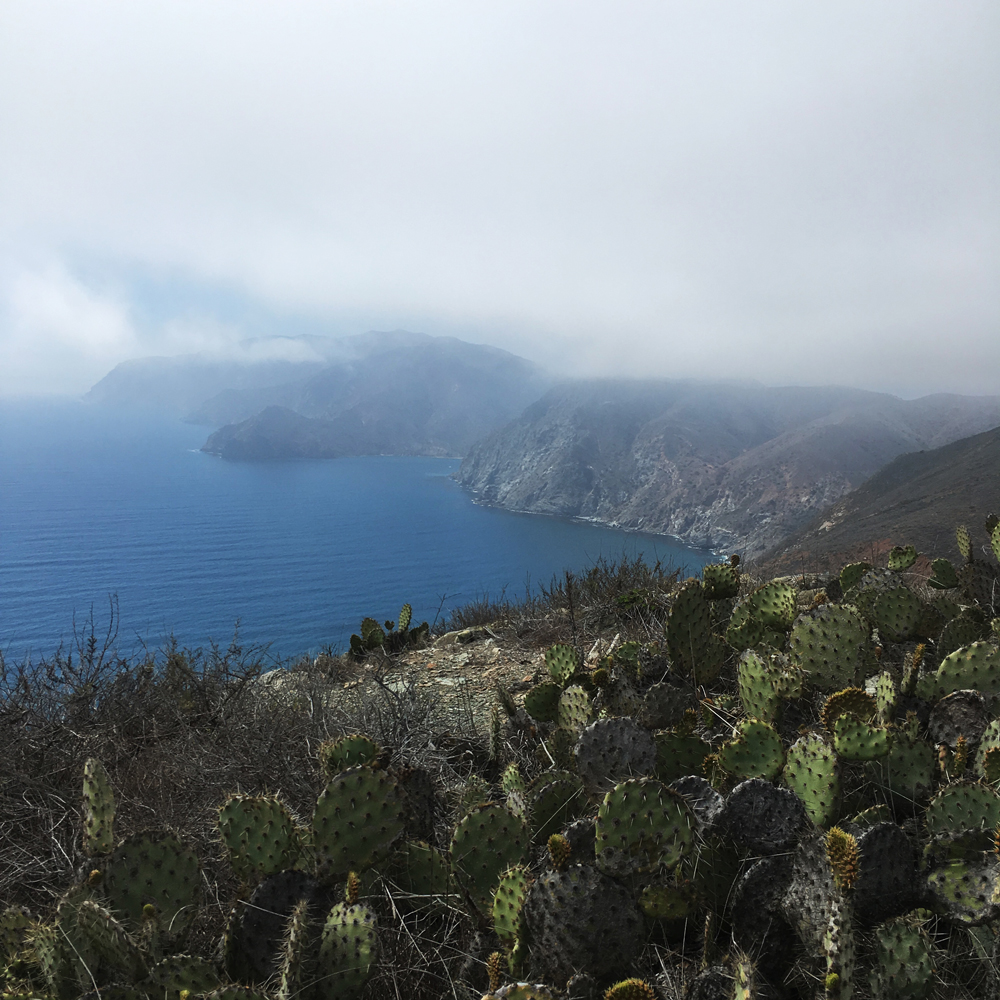
The internet isn’t only composed of breathless fervor. Corners of the internet continue to operate slowly. The Wilson Towercam website is one example. Personal websites are another. Traditionally, the personal website is a format which has an inherent human scale and pace. A website with a single person behind it to author both the code and the content is not too unlike the ever-shifting and growing mountains, which build up and evolve slowly over time. Recently I’ve found JR Carpenter’s term “handmade web” particularly poignant, which she uses “to suggest slowness and smallness as forms of resistance.” I like the thought of maintaining a personal website by hand as a form of “resistance” against the dialed-in, attention-hoarding interfaces we are continually served. (It’s certainly a more reasonable form of resistance than hiking 50 miles on an island.)
Over a recent weekend I attended a lecture by geologist Tanya Atwater, known for her pioneering work surfacing the tectonic evolution of western North America. She was speaking about the formation of the California coastline along the San Andreas fault. As the fault shifted over the millennia, a chunk of earth got snagged and floated 90 degrees clockwise, forming today’s Santa Barbara and opening up what is now the Los Angeles basin. This occurrence also had a happy counter-effect of forcing up a block of the Earth’s crust, which would come to form the San Gabriel mountain range.
I was there at the lecture mainly to learn about the geological history of the San Gabriels, but was struck again by the idea of duration. The entire lecture was delivered in time frames of millions of years, each just a geological blip. By that measure, our already laughably short attention spans become that much more silly.
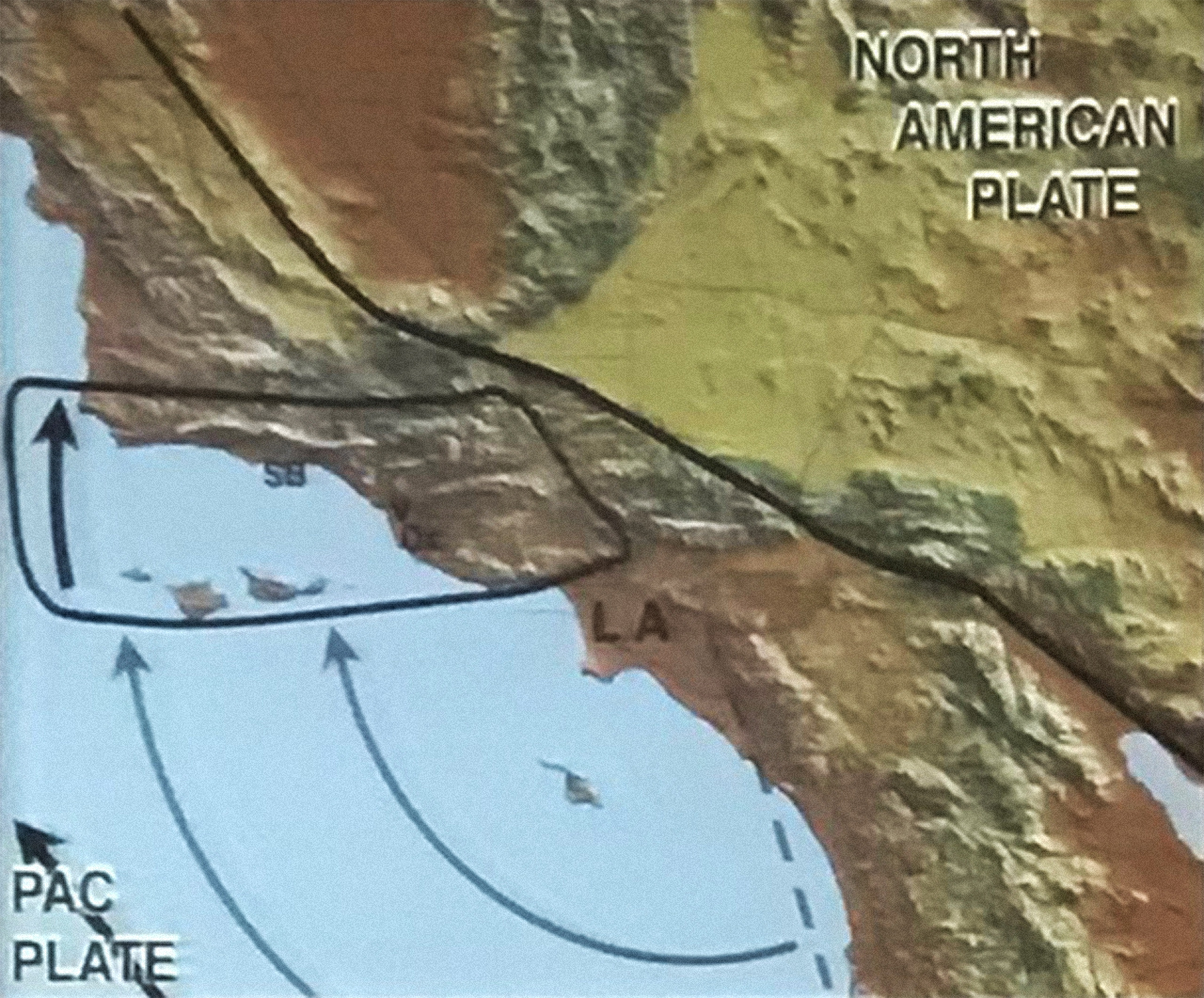
Of course, the internet is neither a mountain nor a tectonic plate. Its very nature is to move at the speed of light, and it will move more quickly than a chunk of earth no matter how we build it, or what we compare it to. My thought is more about relative slowness. What is a healthy pace for your own personal use of the internet, relative to the pace of the internet you have been conditioned to expect?
I still spend the better part of my days making things for the internet. Despite frequent frustrations and ill-effects, I continue to hold a fascination with the internet’s past and future. Our hands are critical in its growth. Walking, thinking about mountains, and observing the Observatory—these actions simply provide contrast. And while the speed of the current net often appears to adversely affect our sense of time and our anxieties, it is difficult to say where that settles over the millennia. But in the midst of the state of things, it’s nice to remind ourselves of the slow and quiet corners hiding in the folds of the net—like the Wilson Towercam—and to hope that we might continue to build them.
This essay was originally published by The Creative Independent + Are.na for The Library of Practical and Conceptual Resources.